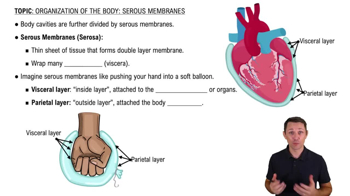Multiple Choice
Which of the following structures is NOT part of the thoracic cage?
65
views
 Verified step by step guidance
Verified step by step guidance Verified video answer for a similar problem:
Verified video answer for a similar problem:



 2:51m
2:51mMaster Organization of the Thoracic Cavity with a bite sized video explanation from Bruce Bryan
Start learning